Table of Contents
Introduction
Are you also feeling lost in the nutrition maze?
Are you also feeling lost in the nutrition maze?
Is it just me, or does it seem like there’s a huge amount of nutrition science information available out there?
When I initially started working as a Nutritionist, I believe the most asked questions were sugar vs artificial sweeteners. And here I’m currently answering inquiries regarding gut microbiota, nutrigenomics, elimination diets, and the connection between nutrition and mental and emotional well-being.
Nowadays, nutrition related information is so readily available because of food blogs and social media, which, according to me, have both pros & cons associated with them.
I strongly agree that information should be available to everyone, and while it’s free, a lot of the time it might be spread by uninformed individuals. So, make sure you are following someone giving out credible information only.
If I am being honest, sometimes I feel lost, too, in the maze of nutrition information that is available online. Yes!! You read that right, even after spending a huge amount of time studying organic chemistry, biochemistry, human nutrition, metabolism, anatomy, physiology, etc and earning decent grades in the process.
I don’t want to discourage you from doing nutrition related research because you could find something useful there. But don’t forget about the basic principles, though, as you delve into the most recent and cutting-edge developments in nutrition.
So, without further ado, let’s deep dive a bit into the basics of Nutrition.
A) Whole Grains: More Than Just Roti
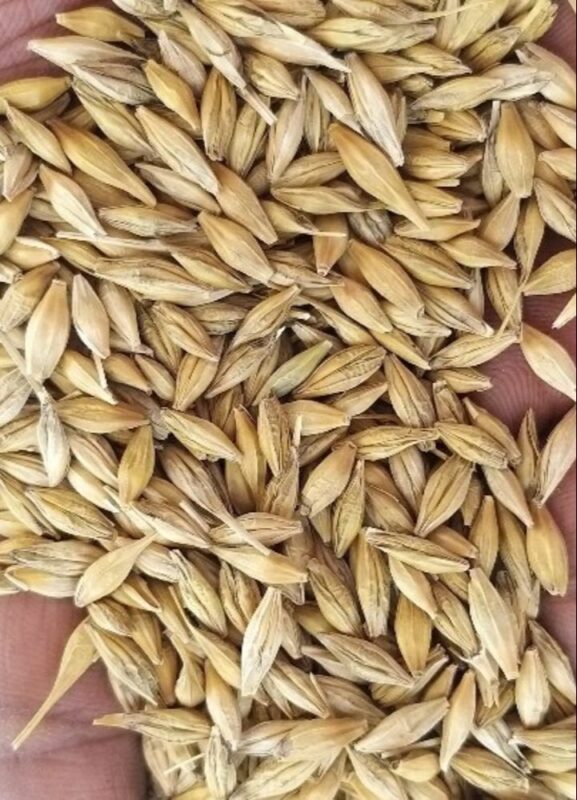
Whole grains are the bedrock of the Indian diet. Think about whole wheat, jowar, bajra, ragi, barley, quinoa, and steel-cut oats. Unlike refined grains like maida or white rice, these retain the bran, germ, and endosperm, making them nutrient dense.
Why You Should Eat Whole Grains
- Rich in fiber, which help aid digestion and satiety
- Contain B-vitamins, iron, zinc, and magnesium
- Help manage blood sugar levels and cholesterol
- Lower risk of heart disease, diabetes, and obesity
Avoid refined grains as refining of whole wheat to white flour depletes most of the fiber and results in substantial losses of vitamins and minerals. 1
In addition, more than half of the betaine is lost in the refining of whole wheat, which lowers homocysteine levels and might be of value for preventing cardiovascular disease. 2 3
In observational studies, consumption of whole grains (as compared with refined grains) has been associated with reduced risk of cardiovascular disease, stroke, and diabetes, and increased longevity. 4 5
For all these reasons, whole grains are strongly preferable to refined grains.
Desi Tip
Rotate between bajra in winters, jowar in summers, ragi for breakfast, and barley in soups or khichdi to keep up with your nutrition game.
B) Make Beans & Legumes Your Protein Pals
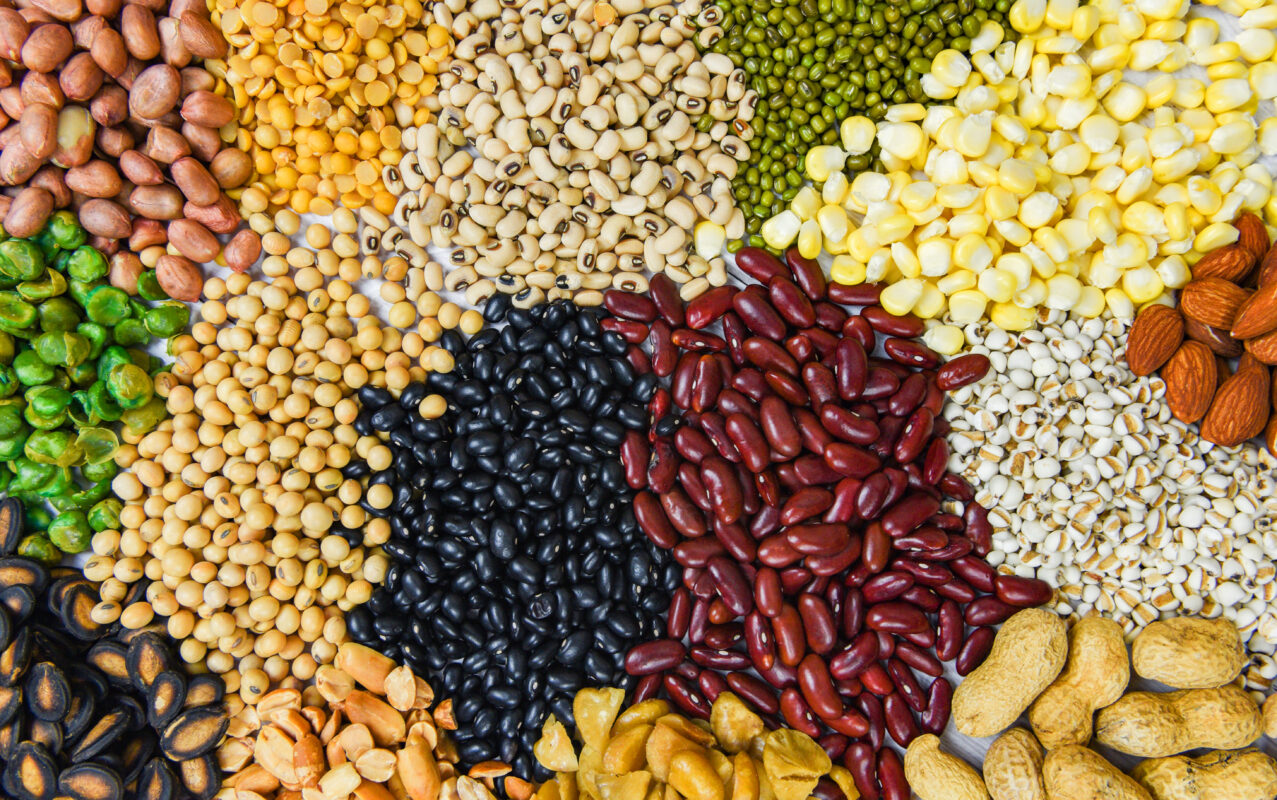
Dals and legumes are not just affordable, they’re plant based protein powerhouses. From rajma and chana to masoor, urad, moong, and toor dal, these are deeply woven into Indian meals.
Consumption of beans and other legumes (eg, lentils) has been reported to improve blood glucose regulation and lower serum cholesterol levels. Beans form a complete protein when combined with grains in a 1:3 ratio (dry weight).
Soy products, in addition to having the beneficial effects mentioned above, have been shown in some studies to improve menopausal hot flashes and other menopause-related symptoms. 6
Most of the effects of soy appear to be due to its content of isoflavones, which have both estrogenic and anti-estrogenic effects. Soy foods have also demonstrated an antihypertensive effect. In addition, it may help prevent osteoporosis and some types of cancer. 7
Nutrition Benefits
- Improve blood sugar control
- Support heart health
- Provide soluble and insoluble fiber
- Rich in iron, potassium, folate, and zinc
- Help in weight management due to their satiety factor
Desi Tip
Try fermented versions like idli, dosa, or dhokla, they enhance gut health and improve the overall nutrition of the particular meal.
C) Fruits & Vegetables: The Real Superfoods
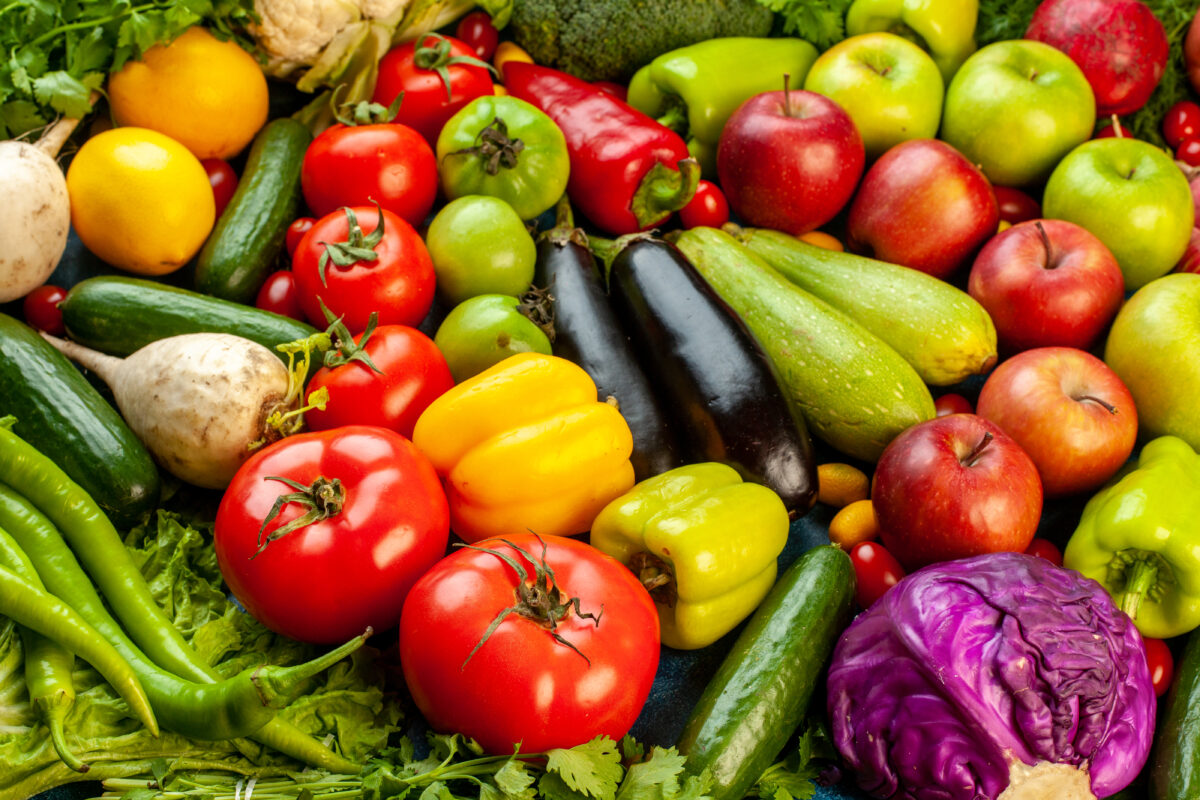
Fruits and vegetables are rich sources of vitamins, potassium and other minerals, carotenoids, flavonoids, fiber, and phytochemicals. Some vegetables are also good sources of essential fatty acids. Consumption of abundant amounts of fruits and vegetables may be useful for preventing or treating cardiovascular disease, stroke, some cancers, hypertension, osteoporosis, and other diseases. 8
Various reviews have associated low intake of fruits and vegetables with chronic diseases such as cardiovascular diseases, high blood pressure, hypercholesterolemia, osteoporosis, many cancers, chronic obstructive pulmonary diseases, respiratory problems as well as mental health. 9 10 11 12
So just to keep it simple, just make sure that you take 1-2 servings of any seasonal fruit that is locally available and easily accessible to you. For vegetables, make sure that you include a seasonal vegetable in all of your meals, maybe in the form of salad or sautéed vegetables, etc.
What They Offer
- Packed with antioxidants, fiber, and vitamins
- Prevent cardiovascular disease, hypertension, cancer, and more
- Boost immunity and gut health
- Reduce inflammation and oxidative stress
Scientific reviews show that low intake of fruits and vegetables is directly associated with increased risk of chronic conditions such as diabetes, mental health disorders, and respiratory issues.
Desi Tip
Having at least 3 servings daily, including amla, papaya, guava, jamun, methi, spinach, lauki, and pumpkin can help in the long run, opt for Indian foods instead of imported ones.
D) Milk & Dairy: Powerful but Personal
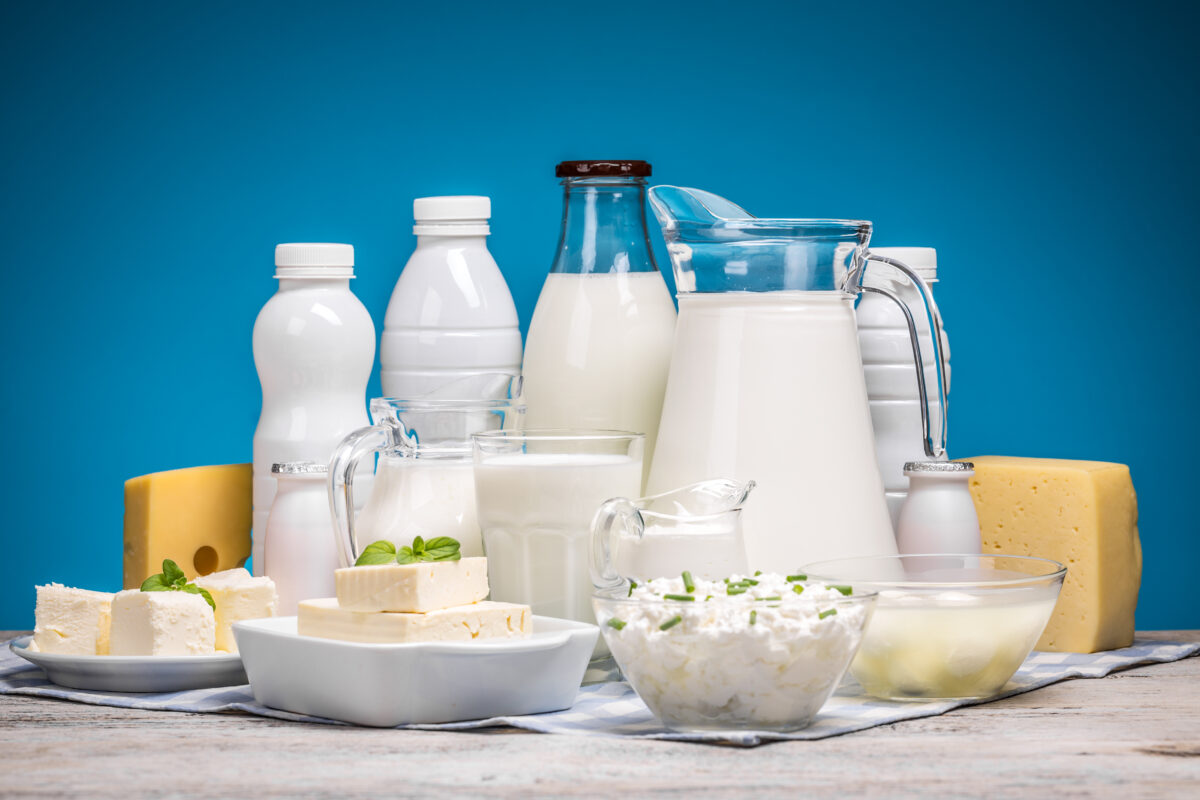
A diet high in milk and dairy products reduces the risk of childhood obesity and improves body composition in adults, which contributes to lowering the risk of developing type 2 diabetes. Additionally, dairy product consumption during energy restriction facilitates weight loss. Also, there is increasing evidence suggesting that especially fermented dairy products, cheese and yogurt, are associated with a reduced risk of type 2 diabetes. 13
India’s taste with milk is ancient, ghee, lassi, chaas, dahi, paneer, all form our food culture. But modern dairy consumption needs a bit more balance and one should not rely on it as a sole source of nutrition.
Health Positives
- Excellent source of complete protein
- Rich in calcium, vitamin D, and B12
- Fermented dairy like curd supports gut health
- Helps manage weight and blood pressure
Research suggests dairy consumption (especially curd, paneer, and buttermilk) lowers the risk of type 2 diabetes and obesity when consumed moderately.
But Watch Out
- Cow’s milk can trigger allergies, bloating, or acne
- Some studies link it to type 1 diabetes in genetically susceptible individuals
Desi Tip
Use fermented dairy daily, curd or chaas with lunch. Skip sugary flavored yogurts or milk drinks.
E) Nuts & Seeds: Nature’s Multivitamins
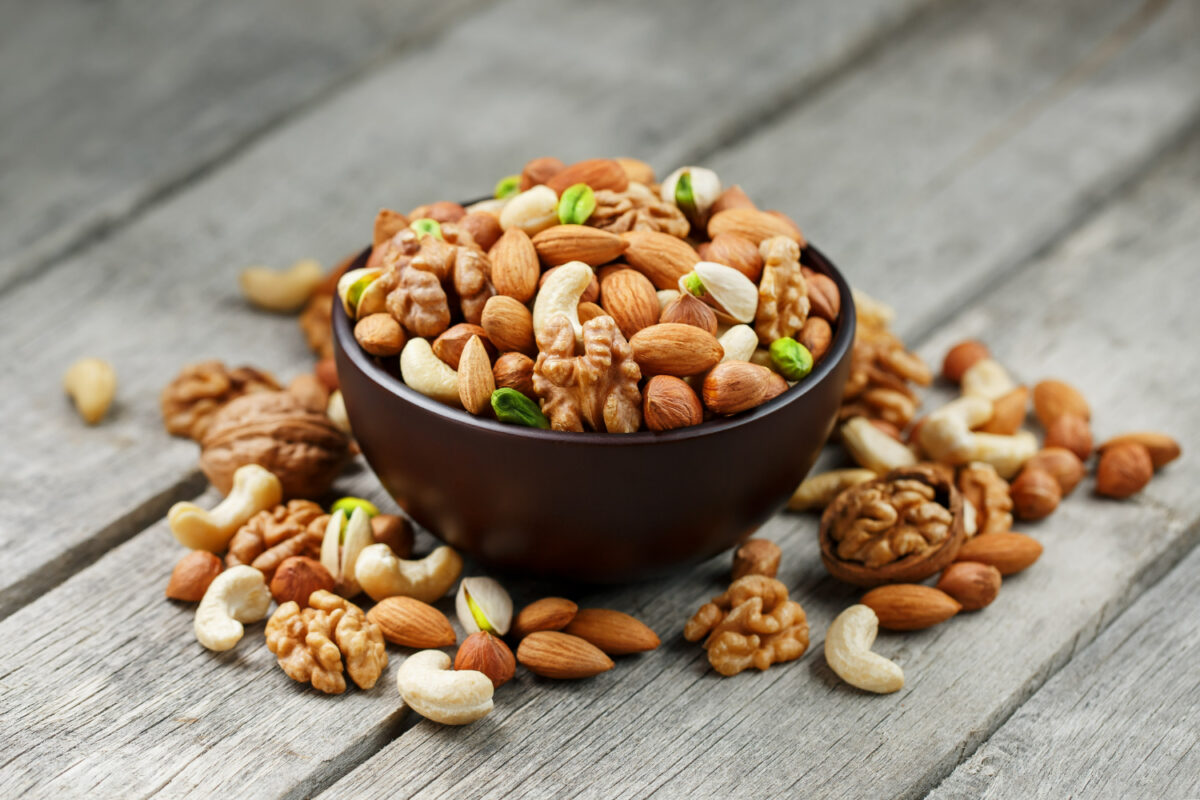
Don’t let their size fool you. Nuts and seeds pack a punch. They are a good source of protein, essential fatty acids, magnesium, and fiber.
The intake of nuts has been linked to several benefits to health, including favorable plasma lipid profiles, reduced risk of coronary heart disease, certain types of cancer, stroke, atherosclerosis, type-2 diabetes, inflammation, and several other chronic diseases. 14
One pro tip: store your nuts in an airtight container in the refrigerator and they are best consumed raw and unsalted.
An easy way to incorporate nuts would be to soak 2-3 almonds & 1-2 walnuts in water overnight, in the morning strain that water and enjoy your nuts.
Nutritional Wins
- High in healthy fats (omega-3s)
- Provide magnesium, zinc, vitamin E, and plant protein
- Lower bad cholesterol (LDL) and support brain function
- Anti-inflammatory and antioxidant
Desi Tip
Soak 4 almonds and 2 walnuts overnight and eat in the morning. Sprinkle flax or sesame seeds in sabzi or rotis.
F) Meat, Poultry & Eggs: Balanced is Best
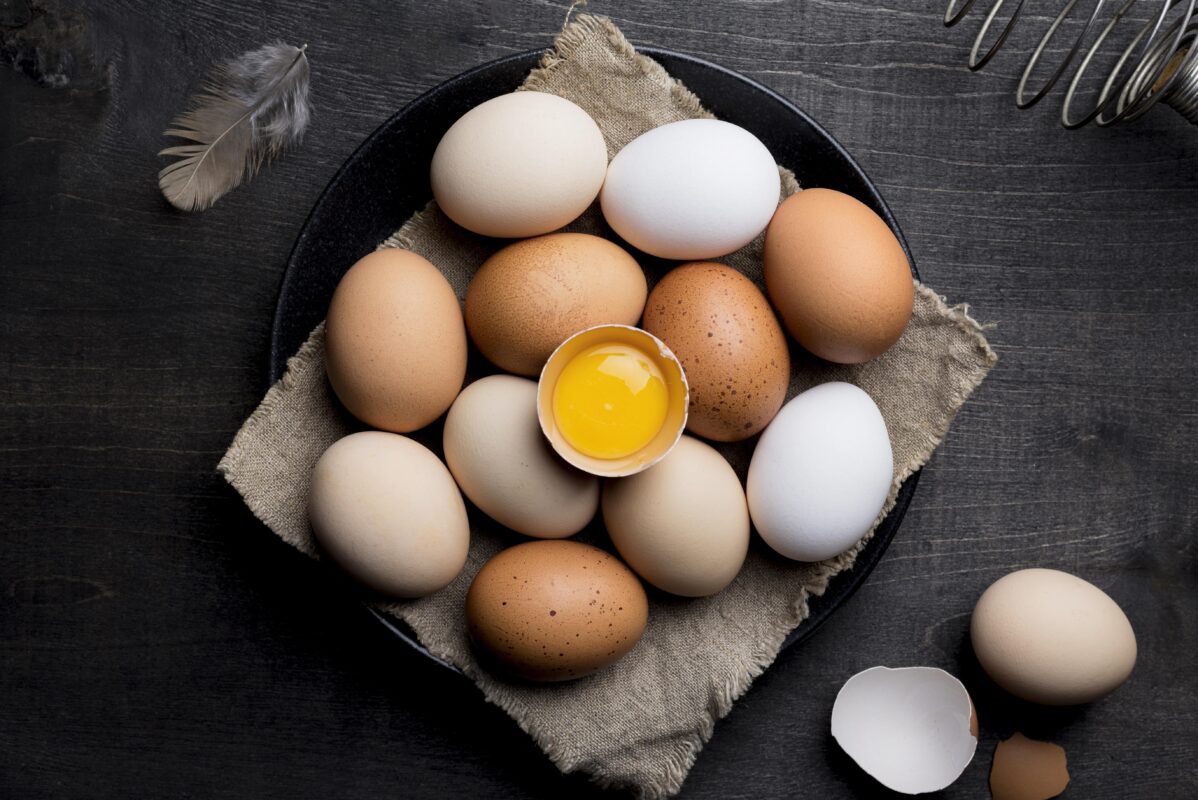
Meat and poultry contain substantial amounts of protein and heme iron (particularly red meat), as well as B vitamins, minerals, and carnitine. However, these foods are also high in cholesterol and saturated fat and, being at the top of the food chain, tend to accumulate pesticides and other toxic substances.
The available evidence suggests that meat and poultry should be used in moderation and cooked at low temperatures, preferably in the presence of moisture. Prefer meat from animals raised organically, without the use of antibiotics and hormones. 15
Eggs are a good source of high-quality protein, lutein, choline, and other nutrients. Prefer boiled or poached eggs and this minimizes the formation of toxic cholesterol oxides.
Pros
- High-quality protein, B12, iron, and zinc
- Helps build muscle and maintain energy levels
- Eggs provide choline, lutein, and healthy fats
Cons
- Red meat is high in saturated fats
- Processed meats raise the risk of colorectal cancer
- Deep-frying or grilling at high temps forms carcinogenic compounds
Desi Tip
Stick to boiled eggs, grilled chicken, or homemade mutton curry. Avoid sausages, nuggets, or overly spicy gravies.
G) Cut Back on Caffeine: Sip, Don’t Guzzle

Caffeine feels like your best friend, until it becomes your enemy.
As caffeine consumption is so widespread, there is a tendency to overlook the fact that it is an addictive and potentially toxic drug. 16
Most adults ingest caffeine every day, primarily in coffee, tea, or cola drinks. It is often used to increase energy and alertness. While the research has not always been consistent, caffeine consumption has been implicated as a possible contributing factor to reactive hypoglycemia, anxiety, panic attacks, insomnia, hypertension, impaired fertility, headaches, cardiac arrhythmias, gastroesophageal reflux disease, and other disorders.
Good Side (in moderation)
- Enhances alertness
- May support fat metabolism
- Boosts physical performance
But Too Much Can Cause
- Insomnia, anxiety, and fatigue
- Acid reflux and bloating
- Hormonal disruptions and mood swings
- Dependency and withdrawal symptoms
Desi Tip
Limit to 1-2 cups daily. Replace evening chai with herbal teas like tulsi or chamomile.
H) Behavioural Habits: Eat Like Our Dadi Did

By dietary behavioral factors I mean, chew your food well. As mealtime nowadays is mostly in a hurry, we often forget the basics of chewing our food well, which is important. Chewing your food helps in breaking it down into smaller particle sizes, leading to better digestion and in many cases fewer gastrointestinal symptoms.
Another behavioural factor can be eating your breakfast. I know most people have different opinions on this one, but several studies have demonstrated that food consumed in the morning, as compared with food consumed later in the day, was associated with lower total daily energy intake, suggesting that food eaten at breakfast is particularly satiating.
In addition, eating breakfast has been associated with significant decreases in serum total and low-density lipoprotein (LDL)–cholesterol levels, and increased insulin sensitivity. 17 18
Eating Habits That Matter
- Chew slowly: Starts digestion in the mouth
- Eat without distractions: Focus on food, not screens
- Don’t skip breakfast: Keeps metabolism stable
- Practice mindful eating: Recognize hunger/fullness cues
Desi Tip
Have a fixed meal schedule. Light dinner by 8 PM. Eat with family when possible for a relaxed time.
I) Portion Control: The Golden Rule
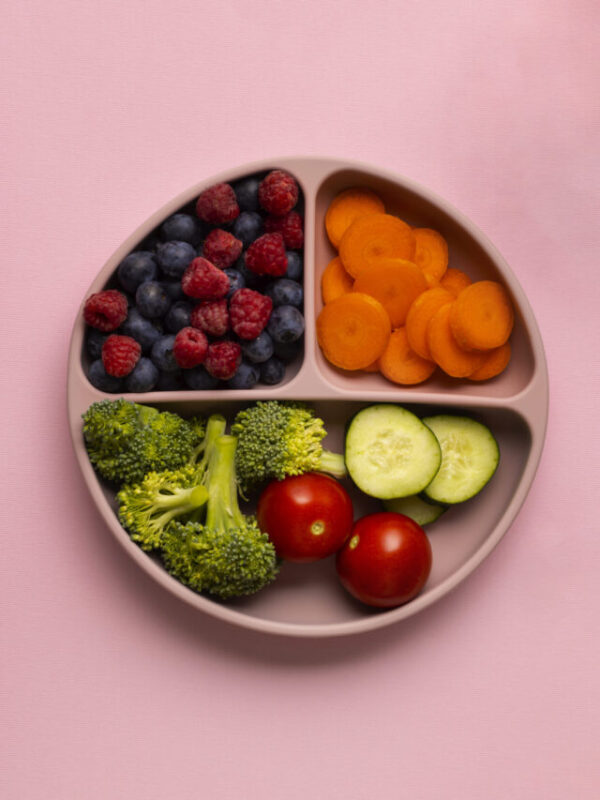
Now that we have gone through the basics some things that we need to make sure of are to practice portion control and mindful eating daily. By portion control I do not mean to restrict or eliminate a particular food or a food group, portion control is the practice of including each & every food group in the required amount.
So while practicing portion control, make sure you eat a range of foods. It is hard to consume too little or too much of any one thing when you are eating a wide range. Eating a wide range of foods helps to guarantee that you’re getting the variety you need because different foods contain different nutrients.
Portion Control Tips
- Use smaller plates
- Eat slowly, stop when 80% full
- Don’t skip meals, or you’ll binge later
- Follow the balanced Indian thali model
Desi Thali Breakdown
- 1/4 plate: Whole grains (roti/rice/millet)
- 1/4 plate: Dal/chana/rajma
- 1/2 plate: Vegetables and salad
- Plus: 1 bowl curd, 1 seasonal fruit, and a teaspoon of ghee or oil
J) Make Mealtimes Joyful

Also, make mealtime a joyful occasion. When you eat food you appreciate, your body absorbs nutrients more readily. Even though the food you’re eating may be the healthiest in the world, if it doesn’t make you happy to eat, it could be because eating is stressful for you, or the meal itself isn’t. Also, when you follow mindfulness in your meal timings, you will be able to understand your hunger and satiety cues as well.
More food does not mean it will provide more nutrition. Overeating, even healthy food, leads to weight gain and sluggish digestion.
Yes, food should be healthy and provide proper nutrition, but it should also make you happy.
When you enjoy your food
- You chew better
- You digest better
- Nutrient absorption improves
- Your emotional health stays balanced
Desi Tip
Don’t eat out of guilt. Celebrate meals as self-care. Cook with love, eat with mindfulness, and respect your body.
Conclusion
Modern Nutrition, Rooted in Tradition
Nutrition doesn’t have to be overwhelming. The answers often lie in our desi kitchens and thalis, not in imported superfoods or high-end food products.
Try to stick to seasonal, locally available, fresh foods, and eat with good intentions. Above all, stay consistent. In health and nutrition, what you do daily matters more than what you do occasionally or inconsistently.
Always remember: Food is not just about nutrients, it’s about rituals, timing, and emotions.
So this is all about the basics of nutrition that every Indian should know and try to inculcate in their routine.
If you want to learn more about Nutrition, you should read this blog.
Frequently Asked Questions (FAQs)
What’s a good Indian breakfast?
Poha, upma, moong chilla, besan chilla, ragi dosa, sauteed idlis with curd are great balanced options. Don’t forget to add in a lot of chopped veggies for additional fiber.
How can vegetarians get protein?
Yes, include legumes, dals, soy, paneer, curd, nuts and seeds, and try to rotate in your diet so that you cover all essential amino acids.
What’s one easy rule to eat healthy?
Try to follow the rainbow rule, include 5 colours on your plate daily through vegetables and fruits.
Can I eat ghee while trying to lose weight?
Absolutely, ghee in moderation improves satiety and supports digestion, 1 tsp per meal is beneficial.
How much water should I drink daily?
Aim for 2.5 to 3 litres depending on your activity level. Include coconut water, chaas, and lemon water.
Are the basics of nutrition so much simpler?
Yes, you do not need to pressurise yourself to follow a particular trend with respect to food and imported products, just follow these basic principles consistently and you are good to go.
Can I follow these nutrition principles if I want to lose weight?
Yes, if followed consistently, these can help you with weight loss too. Always remember consistency is the key.
- Schroeder HA. Losses of vitamins and trace minerals resulting from the processing and preservation of foods. Am J Clin Nutr. 1971;24:562–73[↩]
- Zeisel SH, Mar MH, Howe JC, Holden JM. Concentrations of choline-containing compounds and betaine in common foods. J Nutr. 2003;133:1302–7[↩]
- Vos E. Whole grains and coronary heart disease. Am J Clin Nutr. 2000;71:1009[↩]
- Liu S, Sesso HD, Manson JE, et al. Is intake of breakfast cereals related to total and cause-specific mortality in men? Am J Clin Nutr. 2003;77:594–599[↩]
- Jacobs DR, Jr, Meyer KA, Kushi LH, Folsom AR. Is whole grain intake associated with reduced total and cause-specific death rates in older women? The Iowa Women’s Health Study. Am J Public Health. 1999;89:322–9[↩]
- Taku K, Melby MK, Kronenberg F, Kurzer MS, Messina M. Extracted or synthesized soybean isoflavones reduce menopausal hot flash frequency and severity: systematic review and meta-analysis of randomized controlled trials. Menopause. (2012) 19:776–90. 10.1097/gme.0b013e3182410159[↩]
- Applegate CC, Rowles JL, Ranard KM, Jeon S, Erdman JW. Soy consumption and the risk of prostate cancer: an updated systematic review and meta-analysis. Nutrients. (2018) 10:40. 10.3390/nu10010040[↩]
- Slavin JL, Lloyd B. (2012). Health Benefits of fruits and vegetables. Adv Nutr, 3( 4): 506–16[↩]
- Adebawo O, Salau B, Ezima E, et al. (2006). Fruits and vegetables moderate lipid cardiovascular risk factor in hypertensive patients. Lipids Health Dis, 5: 14[↩]
- Payne ME, Steck SE, George RR, Steffens DC. (2012). Fruit, Vegetable, and Antioxidant In-takes Are Lower in Older Adults with Depression. J Acad Nutr Diet, 112: 2022–2027[↩]
- Park HM, Heo J, Park Y. (2011).
Calcium from plant sources is beneficial to lowering the risk of osteoporosis in postmenopausal Korean women. Nutr Res, 31: 27–32[↩]
- Williamson G. (1996). Protective effects of fruits and vegetables in the diet. J Nutr Food Sci, 96 ( 1): 6–10[↩]
- Rideout TC, Marinangeli CP, Martin H, Browne RW, Rempel CB.
A major point to note here is that cow’s milk being a good source of protein, calcium, and vitamin D is also one of the most common food allergens and, as such, is a frequent etiological or triggering factor in a wide range of illnesses. In addition to this, cow’s milk consumption may play a role in the pathogenesis of type 1 diabetes as well. ((J S J Chia, J L McRae, S Kukuljan, K Woodford, R B Elliott, B Swinburn, K M Dwyer.(2017).A1 beta-casein milk protein and other environmental pre-disposing factors for type 1 diabetes. Nutrition & Diabetes Springer Nature.7(5): e274[↩]
- Alasalvar C., Shahidi F. Tree Nuts: Composition, Phytochemicals, and Health Effects. CRC Press; Boca Raton, FL, USA: 2008. 340p[↩]
- Abete I, Romaguera D, Vieira AR, Lopez de Munain A, Norat T. Association between total, processed, red and white meat consumption and all-cause, CVD and IHD mortality: a meta-analysis of cohort studies[↩]
- Strain EC, Mumford GK, Silverman K, Griffiths RR. Caffeine dependence syndrome. Evidence from case histories and experimental evaluations. JAMA. 1994;272:1043–8[↩]
- De Castro JM. The time of day of food intake influences overall intake in humans. J Nutr. 2004;134:104–11[↩]
- Farshchi HR, Taylor MA, Macdonald IA. Deleterious effects of omitting breakfast on insulin sensitivity and fasting lipid profiles in healthy lean women. Am J Clin Nutr. 2005;81:388–96[↩]

